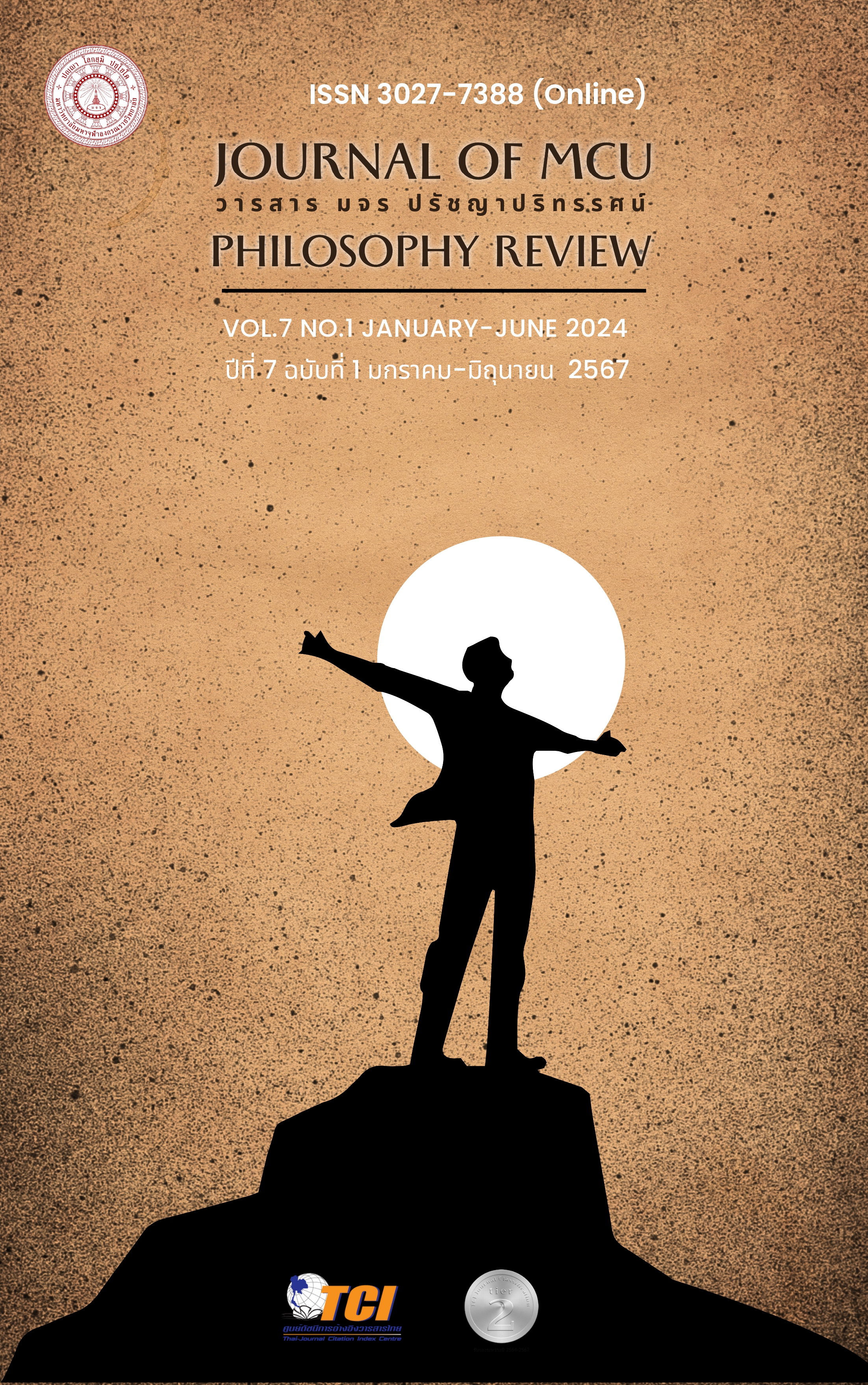Strategies of Language Use and Persuasion in Supplementary Product for Beautiful Skin Advertisement
Main Article Content
Abstract
The purposes of this study were as follows: 1. To study strategies for using language in advertisements for dietary supplements for beautiful skin. 2. To analyze persuasion strategies in advertisements for dietary supplements for beautiful skin. Using the concept of language analysis 1. Theory of language uses strategies and pragmatics by dividing the analysis into 2 areas: verbal and nonverbal. 2. Persuasion strategies the analysis is divided into 2 points: the rational side and the emotional side. The results of the research found that: 1. The theory of language uses strategies and pragmatics 2. Use of words to express the properties of dietary supplements 3. Use of text to describe details in sentences 4. Use of words to describe skin characteristics 5. Using words to describe skin characteristics that people do not wish for. 6. Use of phrases and sentences in a casual and intentional manner 7. Use of metaphors 8. Reference of scientific data 9. Use of scripts nonverbal there are 3 types of products: 1. Using product images It is a visual representation of the products offered for sale. 2. The use of color in advertising that attracts consumers 3. Use of font style these are: 1) straight font style, 2) rounded font style, 2. persuasion tactics. found that: Persuasion tactics by cost-effectiveness reasoning found 46 times. As for persuasion tactics in the emotional field. Found the tactics of 3 aspects.1. Persuasion by conveying that the product helps to whiten the skin easily found 24 times 2. Persuasion by conveying that the product is beneficial to the body found 17 times 3. Persuasion by the media that the product It is reliable and has international standards found 26 times.
Article Details

This work is licensed under a Creative Commons Attribution-NonCommercial-NoDerivatives 4.0 International License.
บทความที่ได้รับการตีพิมพ์เป็นลิขสิทธิ์ของวารสาร มจร ปรัชญาปริทรรศน์
ข้อความในบทความที่ได้รับการตีพิมพ์ในวารสาร ถือเป็นความรับผิดชอบของผู้เขียนบทความ และข้อคิดเห็นนั้นไม่ถือว่าเป็นทัศนะและความรับผิดชอบของกองบรรณาธิการวารสาร มจร ปรัชญาปริทรรศน์
References
กมลวรรณ สีเม้ย, เพชรรัตน์ ปฐมพฤกษ์วงษ์ และกนกวรรณ วารีเขตต์. (2564). การศึกษากลวิธีการโน้มน้าวใจในพาดหัวโฆาแค็ตตาล็อกกิฟฟารีน. วารสารวิชาการมนุษยศาสตร์และสังคมศาสตร์รำไพพรรณี (ออนไลน์). 2(1), หน้า 54-64.
กระทรวงเทคโนโลยีสารสนเทศและการสื่อสาร. 2559. แผนพัฒนาดิจิทัลเพื่อเศรษฐกิจและสังคม. กรุงเทพฯ: กระทรวงเทคโนโลยีสารสนเทศและการสื่อสาร.
กฤษดาวรรณ หงศ์ลดารมภ์ และธีรนุช โชคสุวณิช. 2551. วัจนปฏิบัติศาสตร์. กรุงเทพฯ: โครงการเผยแพร่ผลงานวิชาการ คณะอักษรศาสตร์ จุฬาลงกรณ์มหาวิทยาลัย,
กรชนก ชิดไชยสุวรรณ. 2550. ภาพที่มีอิทธิพลโน้มน้าวใจในงานโฆษณาสำหรับเด็กอายุ 9-14 ปี. ศิลปศาสตรมหาบัณฑิต มหาวิทยาลัยศิลปากร.
ทรงธรรม อินทจักร. 2550. แนวคิดพื้นฐานด้านวัจนปฏิบัติศาสตร์. กรุงเทพฯ: สำนักพิมพ์ มหาวิทยาลัยธรรมศาสตร์.
บริษัท ช้อปปี้ (ประเทศไทย) จำกัด. (2565). ผลิตภัณฑ์อาหารเสริม DHC Vitamin C สูตรเพิ่ม vitamin. สืบค้นเมื่อ 12 กันยายน 2565, จาก https://shopee.co.th/
บริษัท ลาซาด้า จำกัด. (2565). ผลิตภัณฑ์ Vida Collagen C&E คอลลาเจน. สืบค้นเมื่อ 12 กันยายน 2565, จาก https://www.lazada.co.th/
ปพนสรรค์ กลั่นเรืองแสง. (2561). การเลือกใช้ผลิตภัณฑ์เพื่อเพิ่มความขาวใสของผิวพรรณกลุ่มนักศึกษาระดับปริญญาตรีของมหาวิทยาลัยแห่งหนึ่งในกรุงเทพมหานคร. วารสารวิจัยมหาวิทยาลัยขอนแก่น, 18(1), หน้า 13-23.
พรรณธร ครุฑเนตร และปัณณรัช ชูเชิด. (2563). การใช้ภาษาโน้มน้าวใจในโฆษณาบ้านบนเฟซบุ๊กของบริษัทอสังหาริมทรัพย์. วารสารวจนะ มหาวิทยาลัยแม่ฟ้าหลวง. 8(2), หน้า 25-43.
วัฒนา แช่มวงษ์ และคณะ. (2558). กลวิธีการใช้ภาษาในวาทกรรมโฆษณาเครื่องสำอางในภาษาไทย. มหาวิทยาลัยเทคโนโลยีราชมงคลรัตนโกสินทร์.
วิเศษ ชาญประโคน. (2551). ภาษาไทยเพื่อการสื่อสาร. พิมพ์ครั้งที่ 2. กรุงเทพฯ: ทริปเพิ้ลกรุ๊ป.
วิรัช วงศ์ภินันท์วัฒนา และธนพล เอกพจน์. (2564). กลวิธีทางภาษาในการโฆษณาอาหารเสริมสร้างกล้อมเนื้อสำหรับผู้ชาย. วารสารวิชาการมนุษยศาสตร์และสังคมศาสตร์ มหาวิทยาลัยบูรพา. 29(3), หน้า 104-128.
เสรี วงษ์มณฑา. (2540). ครบเรื่องเรื่องการสื่อสารการตลาด. กรุงเทพฯ: สำนักพิมพ์พัฒนภาษา.
Roger, Carl. R. (1949). A Theory of Therapy, and Interpersonal Relationships,
as Developed in the Client-Centered Framework. in S. Koch, Psychology: A Study of Science. New York: McGraw-Hill.


